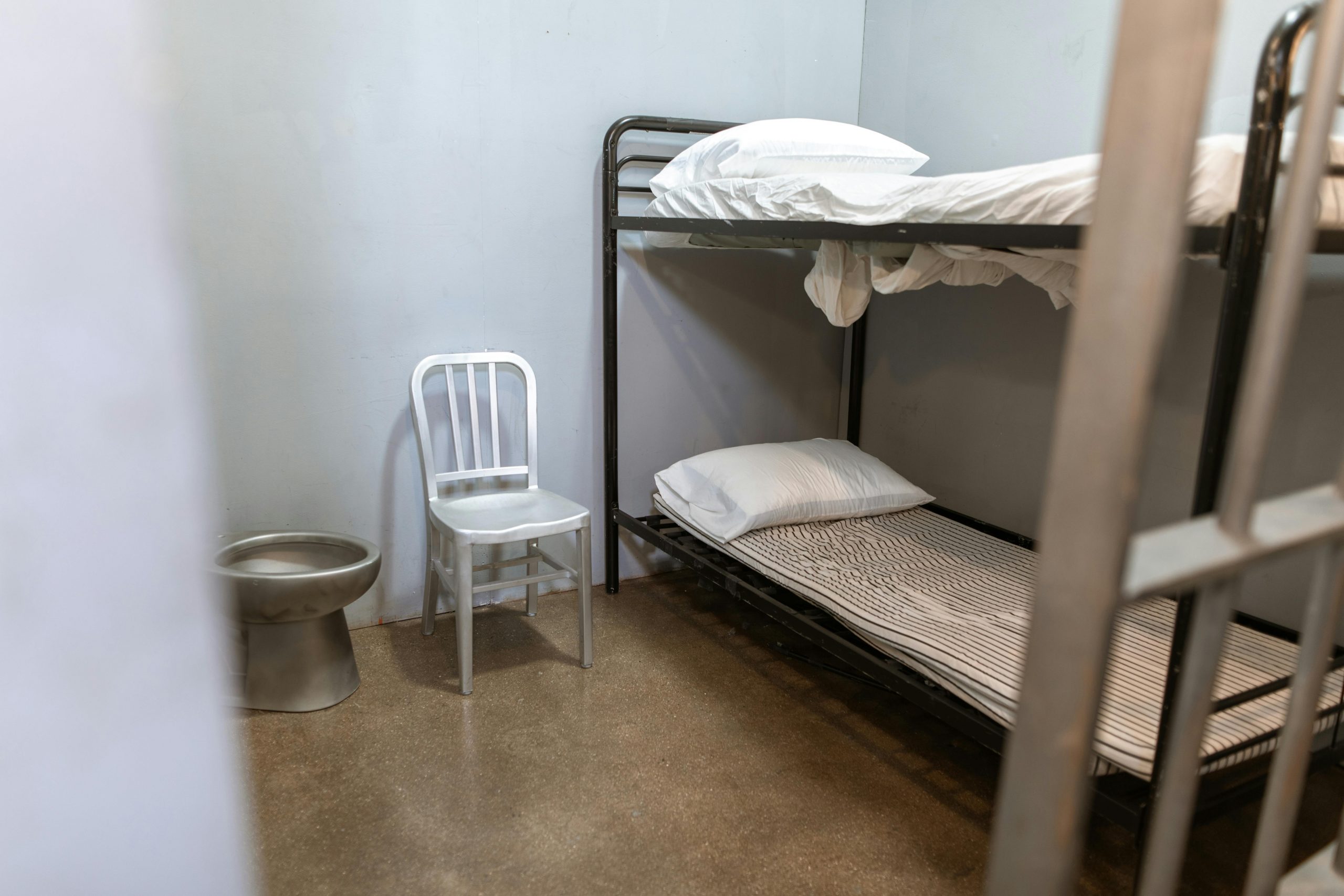
A bare prison cell with a bunk bed, metal chair, and toilet. Image from RDNE Stock project under Pexels license.
Gender segregation is a core feature of American prisons, with men and women separated out into separate facilities. So how do gender nonconforming prisoners fit into this system?
In a study of California men’s prisons from 1941 to 2018, Joss Greene finds that the response to gender-nonconforming prisoners varied historically. As attitudes towards both punishment and gender changed over time, prison administrators shifted their approach to managing gender-nonconforming prisoners.
1941-1954: Segregation
Beginning in the early 1940s, California promoted prisons as sites of rehabilitation. However, from 1941 to 1954, prison administrators viewed gender nonconformity as a contagion that threatened both the overall health of the prison and the prison’s rehabilitation efforts. Prisoners who were identified as “effeminate homosexuals” were segregated from the rest of the prison population, stigmatized, and excluded from educational and work opportunities.
1955-1981: Treatment
From 1955 to 1981, prison administrators approached gender-nonconforming prisoners as “medicalized subjects”, meaning that their homosexuality or gender expression was considered a psychiatric or medical condition.
Gender-nonconforming prisoners were subjected to psychological studies and “treatment” (in the form of harsh medical experimentation) at a newly constructed California prison medical facility. However, many prisoners were able to use their new medical label as leverage to demand access to some gender-affirming care.
1982-1998: Risk Management
In the late 1970s, California’s “tough on crime” approach led to a historic rise in prison populations. To increase efficiency, prison administrators classified prisoners into four risk levels, based on their sentence, behavioral record, and other factors. Those classified as high-risk were subject to harsher punishment. Under this system, all “known homosexuals” were automatically classified as a Level 3 risk (the second-highest level). They were grouped in with individuals convicted of more serious crimes, faced increased restrictions within the prison, and were frequently targets of violence. Victims of violence often increased their risk score by defending themselves, as the system did not distinguish between the risk of harm to the prisoner and the risk of the prisoner harming others.
1999-2018: Legal Status
Finally, from 1999-2018, there were growing social movements opposing mass incarceration, and “transgender” became a recognized legal status. Prison administrators, seeking to avoid legal battles, created a “transgender” prisoner category and expanded their medical services, including gender-affirming hormone treatments.
Despite these legal advances, most transgender prisoners have been unable to access hormone treatments and still face widespread suffering in prisons. They remain a protected group in name, but not in reality.
Advancing Rights
Greene’s work highlights how institutions (and their underlying logic and resources) can shape how gender boundaries are defined, reproduced, and changed over time. In California prisons, views on crime and punishment, incarceration rates, prison resources, and anti-incarceration social movements all shifted gender boundaries within prisons. These historical shifts should provide hope for some trans rights advocates, who view changing prison policies as an opportunity to provide relief for transgender prisoners. That said, fully addressing the suffering of gender-nonconforming prisoners will require more fundamental changes to both societal gender boundaries and the nature of prisons themselves.

Comments